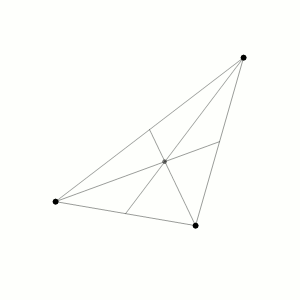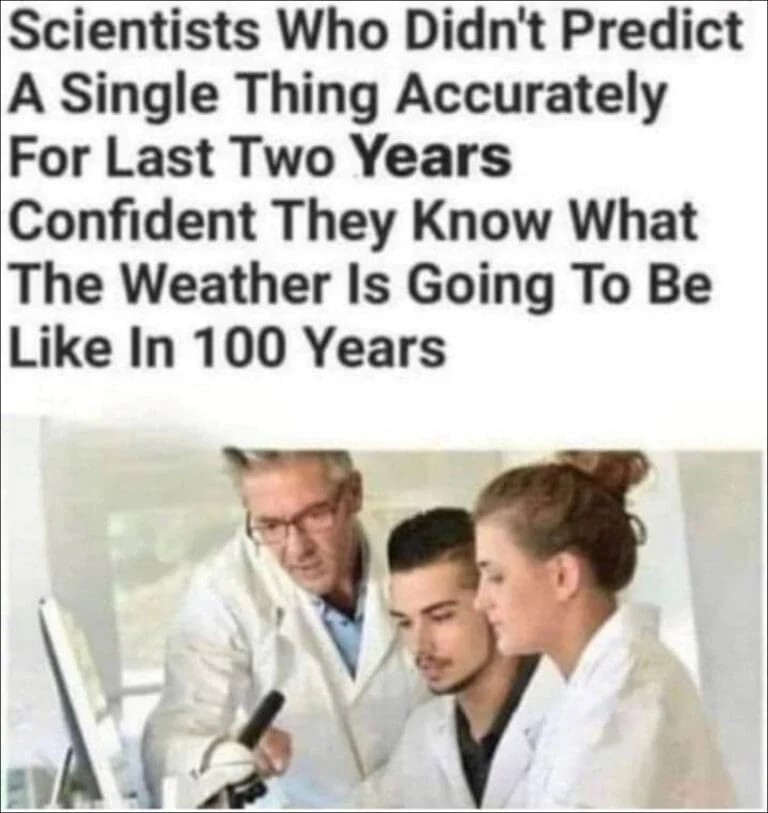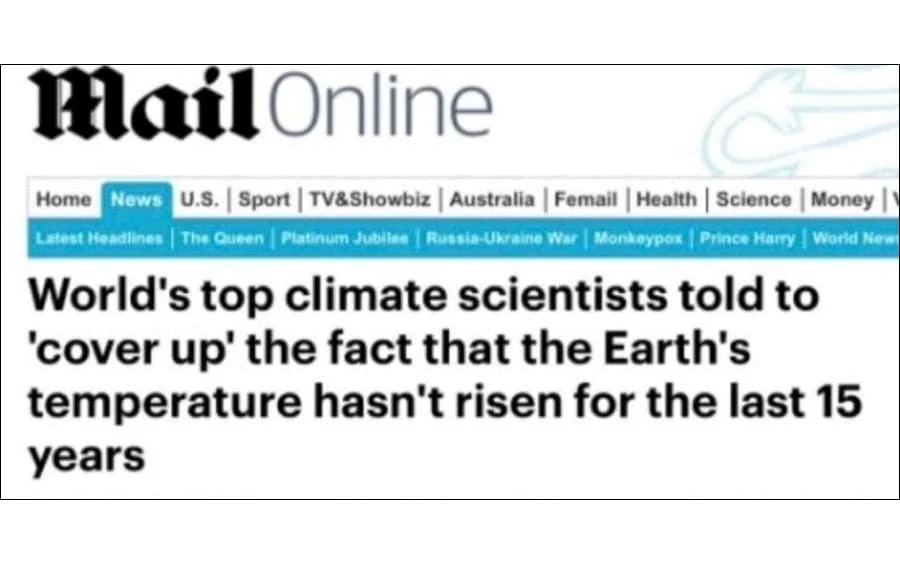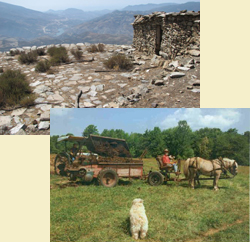« An agroecological model for the end of the oil age | Home | Watering the Garrotxes: donkey farming in the French Pyrénées »
The Achilles Heel of the Climate Change Warriors: The limits of complexity science
By Karl North | December 30, 2023
The goals of this essay are two. First, I will expand the critique of the ways we do science that I made in premise #3 of An agroecological model for the end of the oil age. My hope is to raise questions about our deeply ingrained faith in all the current methods of scientific inquiry. I had not even contemplated such a daunting project until Undenial published Dr. Tom Murphy’s Infinite Growth with a Finite Brain, which is in my view a gratifying corroboration of my arguments for the limits of science in a complex world.
The second aim is to use the new understanding of the limits of science to raise questions about and hopefully subvert the current channeling of environmental concerns and activism into a fearful obsession with climate change. I will argue that the focus of activism is misplaced because the method of inquiry – simulation modeling – that dire climate change projections rely on fails the test of the predictive power of its claims. As a result, that attention is misplaced because the bulk of anthropogenic environmental damage to be alarmed about is not in an uncertain future but in easily documented past and present history.
The Historical Background
From the beginning of the scientific age in the 17th century, scientists found that achieving predictable results of experiments in the real world was impossible because the variable they wished to understand is usually emmeshed in a complex of causal relations. So, they retreated to laboratory conditions where they could reduce the variables in play to a manageable few, which achieved the goal of reproducible, predictable results. People who eventually called themselves scientists discovered that by reducing their focus to few variables they could discover causal relationships whose consistency they could demonstrate by replicable experiments. This so-called reductive method, when applied to invention of technology, delivered such powerful results that it came to dominate inquiry into how the world works.
The trouble began when they applied knowledge obtained under laboratory conditions to problems in the real world. Emmeshed in a dynamic network of complex interactions, the predicted results often obtained for a while, but over time caused other consequences that potentially, and often actually, contradicted the goals of the application, or diminished its value.
The Limits of Science
On this question Murphy states his view bluntly: “we will never master all knowledge and will inevitably create unintended consequences.” Moreover, he describes the reductive method he is trained to use as “a narrow tool”. Rare confessions from a career scientist, shouldn’t these declarations provoke critical reflection? Murphys elaborates:
But the very thing that makes science powerful is also its biggest weakness. It relentlessly pushes wrinkles aside, smoothing its zone of interest to the least complex system one can obtain for study. This is ideal when wanting to observe a Bose-Einstein condensate in isolation, or the genetic mechanism for producing a certain protein. Science also tends to dissect a problem (or literal critter) into the smallest, disembodied pieces—which then have trouble relating back to the whole integration of relationships between pieces. Other “ways of knowing” attempt to grapple with the whole, accepting it as it is and not applying reductionist tools.
So much for the limits of reductionist science; what about those other ways of knowing? Murphy does not specify. However, others have taken complexity by the horns and developed ways of studying problems in holistic context. One of these ways, the method of simulation modeling, happens to be the method of choice that underpins all of the dire predictions and activism of the climate change warriors. What are the capabilities and limits of this relatively new way of doing science? Have any promoters of the scientific “consensus” on the subject ever questioned their faith in the fundamental assumption that simulation modeling can deliver the goods that they claim? Not to my knowledge. What do the actual creators of the method say? Shouldn’t activists who claim to be following the rules of science want to know?
The Limits of Complexity Science
What is it about complexity that makes it a stumbling block to the advancement of science? Physicists first had a demonstration in what came to be known as the “three body problem”. Simply put, they discovered that with few exceptions, more than two physical bodies subject only to the laws of gravity and Newtonian mechanics, interact over time in ways that cannot be predicted.
The universe we inhabit is even more complex, consisting of a multitude of elements subject not only to change by interaction but also often subject to internally sourced mutation as living organisms.
Because research that was acceptable in the reductionist paradigm was incapable of accounting for the interconnected, systemic nature of the universe, technologies built exclusively on the products of reductionist science succeeded as predicted in the short run, but with more distance in time and space destructive consequences appeared and multiplied, exhibiting nonlinear behavior over time that the reductive method was not designed to capture or explain. Hence the modern age produced a long pattern of technological ‘miracles’ that are fundamentally flawed because they rely on the products of reductionist science. In the end the vaunted predictive power of the reductive method increasingly stood revealed as a short run affair, almost inevitably altered through time as the impacts of a single technological intervention ripple through the interconnected universe, generating multiple consequences. In The Age of Modernity and its Discontents I offer a fuller account of the negative consequences of the worldview of reductionist science.
Unfortunately, the scientific community has been slow to come to terms with complexity as an obstacle to a fuller understanding of how the world works. Still, a science of complexity has emerged in recent decades, defining itself as
concerned with complex systems and problems that are dynamic, unpredictable and multi-dimensional, consisting of a collection of interconnected relationships and parts. Unlike traditional “cause and effect” or linear thinking, complexity science is characterized by nonlinearity.[1]
By contrast, systems such as a gasoline engine are said to be merely complicated – thus predictable because their moving parts and fuel perform according to known physical laws and interact in a relationship fixed by design rules.
However, decades ago, scientists who dared to seek answers to how things change over time in a real- world context fled the stifling reductionism that dominated in academia. Several, like John Holland (Hidden Order: how adaptation builds complexity) and James Gleick (Chaos: making a new science) found kindred souls in the Santa Fe Institute, attracted partly by the computing power of the nearby Los Alamos National Laboratory.
Jay Forrester, an engineering professor at MIT recognized that control theory from the engineering of relatively simple mechanical systems could be expanded to complex living systems. In the 1960s, moving to MIT’s school of management as a cover and using the primitive computer hardware and software available at the time, Jay created the first simulation model of world dynamics. Jay’s students refined his model and published the result, The Limits to Growth, in 1972.
Common to all these efforts was the dawning awareness that despite all its improvements on reductionism, complexity science would never be capable of long-range forecasting with the desired accuracy. The main textbook in the US of the worldview and tools of system dynamics modeling by MIT professor John Sterman put MIT on the map as the main center in the US of this school of systems thinking. As a local farmer hitching a ride on courses in systems thinking and modeling at Cornell, I had occasion to talk to Sterman when he was invited for a presentation in the seminar series on the subject. When I asked if he thought complexity science constitutes a Kuhnian revolution in how we do science, he agreed without hesitation. Yet his textbook begins with a long chapter on the system dynamics worldview that describes the many limitations and pitfalls of doing science in the realm of “virtual worlds”. And my teachers in the course, all intellectual progeny of the MIT school, all stressed the limits of complexity science in general and system dynamics modeling in particular.
In the 2004 update of The Limits to Growth, the authors state,
We do not write this book to publish a forecast about what will actually happen in the 21st century. We are not predicting that a particular future will take place. We do not believe that available data and theories will ever permit accurate predictions of what will happen to the world over the coming century.
This has not stopped many readers of the work, both for and against, from taking the dates on the time axis of their output graphs as anything but a rough time frame, and from falsely concluding that its time graphs are predictive – for example that population or pollution will peak at a certain level at a certain time.
The authors do claim that “current knowledge [of overshoot of carrying capacity] permits us to rule out a range of futures as unrealistic.” Actually, students of ecosystem science, who see overshoot all the time in ecosystem dynamics, could have said as much. The importance of the LtG model was to dramatize overshoot as a phenomenon of the human species.
The Achilles Heel
Where do the limitations of complexity modeling leave us in regard to climate predictions? If any of the foregoing is persuasive, the fundamental flaw in the predictions of the International Panel on Climate Change (IPCC) is that that the scientists falsely claim accurate predictive power from the method of simulation modeling of the dynamics of complex systems (of which the earth system and its climate are one) that the method cannot deliver. Thus, none of their claims, including runaway global warming, has scientific validity. The public has been led to believe in a disastrous future by scientists who have used a method of limited capability, whose limitations they have not critically examined.
To be fair, the false assumptions about the predictive power of computer models are widespread; climate scientists are far from the only ones to misuse the method. Moreover, to be clear, since the climate is always changing, I think it is always possible that the future claimed by the IPCC will occur, but would be an accidental coincidence, just not something a model could have predicted.
Many critics of the IPCC model, including myself, were once swayed by its catastrophism. By now our reductionist habits are so ingrained that we mainly see the world as isolated arcs of cause and effect, and automatically study it and attempt to manage it that way. People believe reports of isolated variables alleged to cause tipping points, forgetting that they exist in a poorly understood system that includes many potential counteracting variables. My antidote was to study systems thinking and its methods, starting over twenty years ago. The method of simulation modeling begins with the construction of a hypothesis: a causal diagram of the historical behavior of interest. This process reveals, not isolated causal arcs, but a matrix of causal relations and in fact a structure of feedback loops.My intellectual and practical journey included the creation and teaching of an introductory course in systems thinking, Understanding Problem Situations As If Complexity Mattered.
Fallout
The discovery of the audacious mendacity and widespread official corruption that drove the Covid scam has provoked many to question other official narratives that use the same playbook. Thus, the deliberate attempt to conflate what constitutes a pandemic with what most people experienced as a flu season was resurrected in the attempt to stretch periods of weather into climate change. Appropriately massaged into a collective psychosis of fear , the public failed to see the sleight of hand in either rendition.
Dave Collum, tenured professor of chemistry at Cornell, accepted the IPCC story without question until 2016, when he was moved to inspect it carefully. He related his itinerary as a critic in 2019, and stated this year in his well-known Year in Review:
Maybe the Covid scam and all the associated lies proffered by credentialed experts have you wondering if the credentialed climate experts are lying too. Climate change, in my opinion, is the biggest scam in history. - Dave Collum’s 2023 Year in Review
Few writers familiar to students of overshoot have questioned the official climate change story until recently. J. M. Greer is edging toward a more critical stance:
The future of global climate depends …on an immensely complex network of feedback loops and planetary processes that are very poorly understood at present, and may be wholly beyond our ability to measure or calculate. https://www.ecosophia.net/riding-the-climate-toboggan/
And for the second time in a month, Chris Martenson alerted subscribers to a report that questioned the climate change official narrative: “Controversial Text Challenges Consensus on Climate Change and AGW Theory” https://iaindavis.com/the-climate-science-is-settled-any-questions-part-1/
Like many, RFK Jr sees the same political pattern as other recent scare campaigns:
Climate issues and pollution issues are being exploited by … mega billionaires…The same way that Covid was exploited to use it as an excuse to clamp down top-down totalitarian controls on society and then to give us engineering solutions.ref yy~ Robert F. Kennedy, Jr.
Maybe these are signs that the climate change story is beginning to unravel. In fact, it has faced serious criticism from the outset about the quality and veracity of the empirical data and the conclusions drawn, most of it suppressed in the story fed the public.
Instead, the public has been repeated served the “consensus” argument, a scientifically meaningless justification that should raise red flags about the value of the science. Now, when the media[2] are trying to present the most outlandish things as drivers of climate change, I see desperation, which often heralds collapse of a narrative.
Conclusions
What is to be done? Systems thinking should alert us to the abusive use of simulation modeling by the politically selected IPCC and the climate change warriors it has spawned. If that is true, all the predictions that derive from it, ranging from near term extinction to century-long time horizons, diminish in value, and cannot be our guide to action. From this perspective, the climate catastrophism used to breed a fearful public and its draconian globalist political agenda should be especially questionable. A year of drought or even a weather pattern of a decade or two is no indication of an inevitable long-term trend. Nonetheless, such false or deceptive claims are now so repeatedly dished out by the corporate media as to constitute a scare campaign. Perhaps this is only the latest in a series of psyops ordered by a globalist power elite that is frantic to control the restive masses as its empire starts to crumble.
Still, climate change of different time scales and even short-term climate shocks, whatever the causes, are part of the way the earth system works, and will always be with us. Systems thinking tells us that causes of behavior in complex systems like the earth and its climate are usually multiple and unpredictable. Long term and more short-term ones are happening simultaneously. That is the future we can expect, and to which we should try to adapt, paying attention to changes on the ground happening at different rates. Plant growth on my farm, ranging from crops to giant thistles in pasture to forest conifers was greater this year than it has been for the last ten. Snow cover in New England has been slowly dropping for at least half a century. We may be entering a solar minimum of three decades with its estimated cooling effect. These observations are just a few of the many dynamics that may affect the climate where I live. From them we can estimate probabilities and act cautiously, but make no hard predictions.
[1] https://www.uvic.ca/research/groups/cphfri/assets/docs/Complexity_Science_in_Brief.pdf
[2] Graphics are courtesy of Dave Collum
Topics: Political and Economic Organization, Recent Additions, Social Futures, Peak Oil, Relocalization | 2 Comments »





January 3rd, 2024 at 1:15 pm
I think your very last graphic is a made-up meme because I can’t find confirmation of it anywhere. What is it included just to make the point, or do you have a source for it?
A very excellent article otherwise. Bret Weinstein often reminds us about the unpredictability of complex systems.
January 6th, 2024 at 8:49 pm
Tardigrade, you could be right about the last graphic being a made up meme. Still, as a joke about how the mainstream media blames everything on AGW, it works for me.